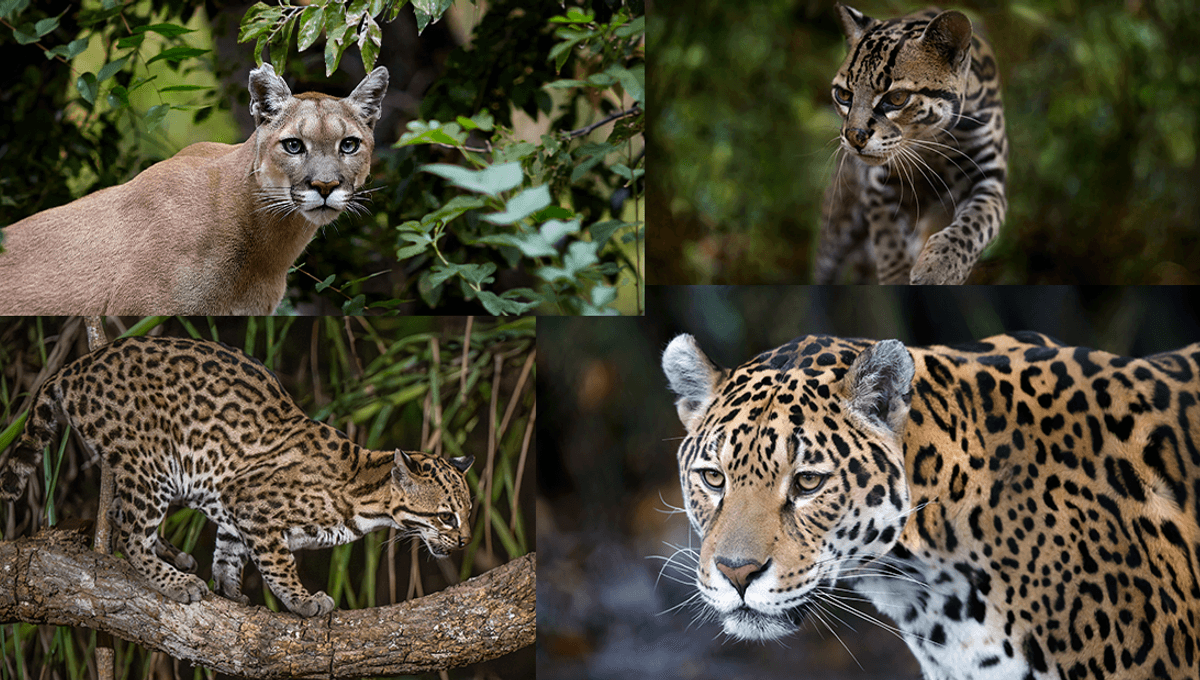-
أخر الأخبار
- استكشف
-
الصفحات
-
المدونات
-
المنتديات
Hunting High And Low Helps Four Wild Cat Species Coexist In Guatemala’s Rainforests

Hunting High And Low Helps Four Wild Cat Species Coexist In Guatemala’s Rainforests
Guatemala’s rainforests support a remarkable diversity of cat species, including jaguars, pumas, ocelots, and the lesser-known margays. It’s unusual to have so many medium to large predators in one ecosystem, let alone from one family, and now scientists have worked out how they manage. Two species follow Michelle Obama’s philosophy: “When they go low, we go high”.
The rest of this article is behind a paywall. Please sign in or subscribe to access the full content. It’s common for ecosystems to feature several species of herbivore with similar diets, and sometimes they benefit from each other’s presence. Multiple carnivores find it harder to co-exist, and the larger they are, the less chance there is of more than two occupying the same space. Exceptions are always interesting to scientists, and while they have not reached the astonishing mix of apex predators that flourished in the late-Cretaceous Atlantic, Guatemala’s rainforests have proven a puzzle. A new study used footage from trail cameras and DNA analysis from droppings to work out how Central America’s cats survive side-by-side. Three-dimensional thinking appears to be key, with pumas and margays realizing there’s food to be had for the climbing. “This research challenges long-held assumptions about how large carnivores coexist without competitively excluding each other and highlights the importance of vertical foraging stratification,” said study author and Oregon State University PhD student Ellen Dymit in a statement. For an individual animal, eating meat can be a very efficient way to obtain nutrients, but on an ecosystem basis, it’s inevitable that there will be less energy available every time you go up a trophic level. Even in an environment as rich as a tropical rainforest, there just isn’t that much prey around, and if one species gets better at catching it, they leave little room for others. Observations show that other species survive by occupying a different space, time, or diet from the most successful – for example, catching different prey or hunting at night. However, rainforests have been less studied for questions like this than open savannahs, where there are fewer obstacles to observations, or islands too small to support much diversity. In the Maya Biosphere Reserve, Dymit and colleagues collected 215 scat samples and studied their DNA to identify the species of the animal that made them, and what it had been eating. They found jaguars' diets are largely composed of peccaries (American pig-like animals known to mourn their dead) and armadillos, with a side-diet of ocelots, proving things are not entirely friendly among the cats. All spend most of their time on the ground. Zoologists get ridiculously excited about finding droppings, in this case, Ellen Dymit with cat scat. Image credit: Oregon State University Although pumas eat a substantial amount of brocket deer, peccaries, and lowland pacas (a rodent of unusual size), they were more than twice as likely to have eaten monkeys, which mostly live in trees, than any other prey. Being smaller, ocelots can’t tackle some of jaguars’ prey, and instead stick mostly to opossums and Gaumer’s spiky pocket mouse. Although opossums are often tree-dwellers, they were probably caught at ground level. Margays have the most specialized diets, with just seven species identified in their scats compared to 20-27 for the other three cats, also mostly composed of opossums and rats. A fifth species of cat found in Central American rainforests, the jaguarundi, was too rare for useful analysis. Although the cameras the team set around the area did not record cases of pumas catching monkeys, the authors doubt all the kills are made when the monkeys come to ground to drink or forage. If this were the case, one would expect jaguars to have plenty of monkey in their diet as well, particularly since both are most active at dawn and dusk. In light of film of pumas hunting in the forest canopy, it is much more likely that pumas are doing plenty of hunting at heights, taking advantage of their lower weight compared to jaguars. Meanwhile, pumas probably don’t have the bite force to tackle most armadillos, so ground-hunting loses some of its attraction. The margay diet could be obtained either on the ground or in the canopy, but camera traps recorded them in the trees frequently enough that the researchers think they obtain a lot of their food there. The difference in prey between the suspected arboreal hunters and the ground-based ones appeared to be greater than the differences based on size between the large jaguas and pumas, and the medium-sized ocelots and margays. As a result, the cat species were found to overlap in their territories, at least on two-dimensional maps, more than expected. “As habitat loss and climate change reshape ecosystems, understanding how predators partition resources will be critical for conservation,” Dynit said. The study is published in the Journal of Animal Ecology.


